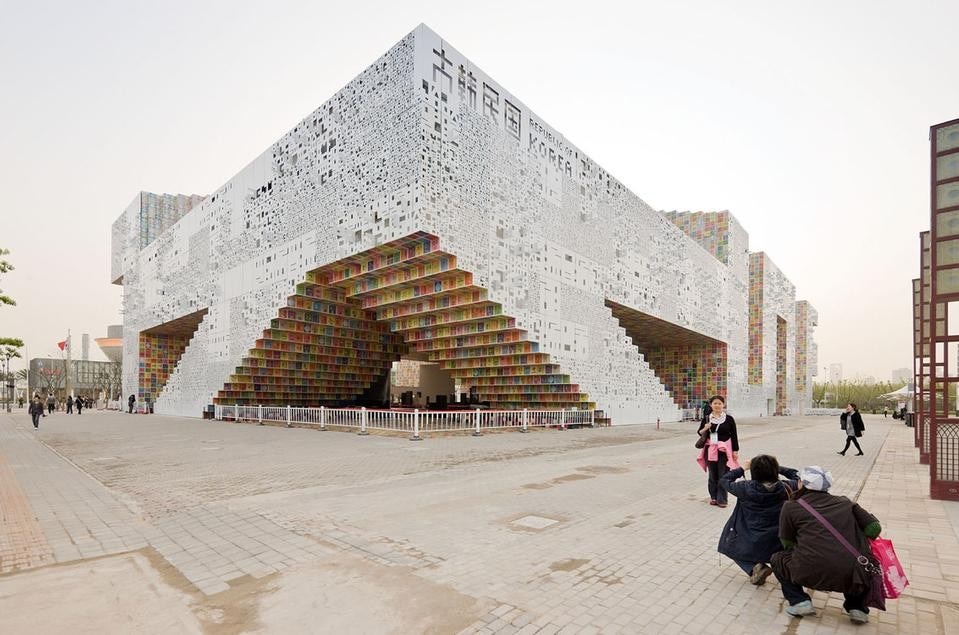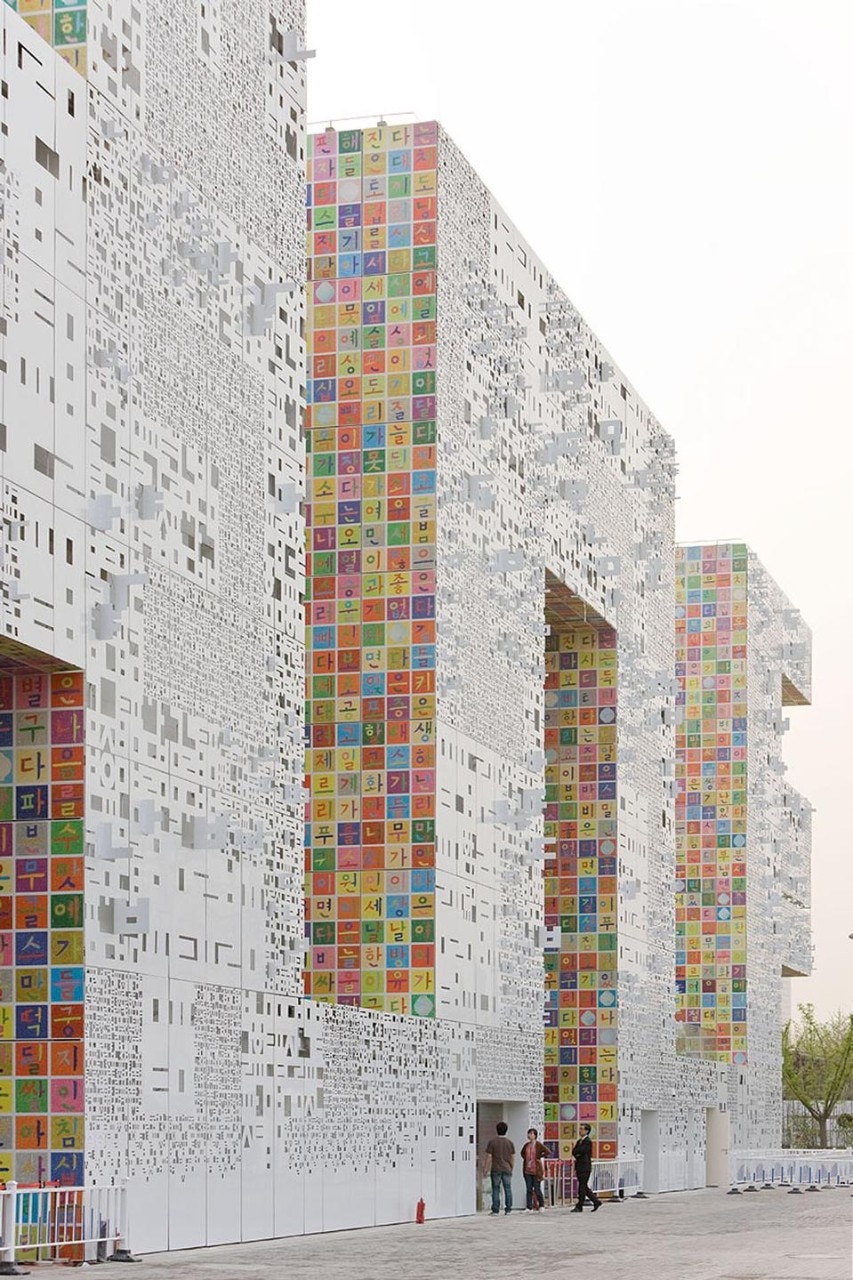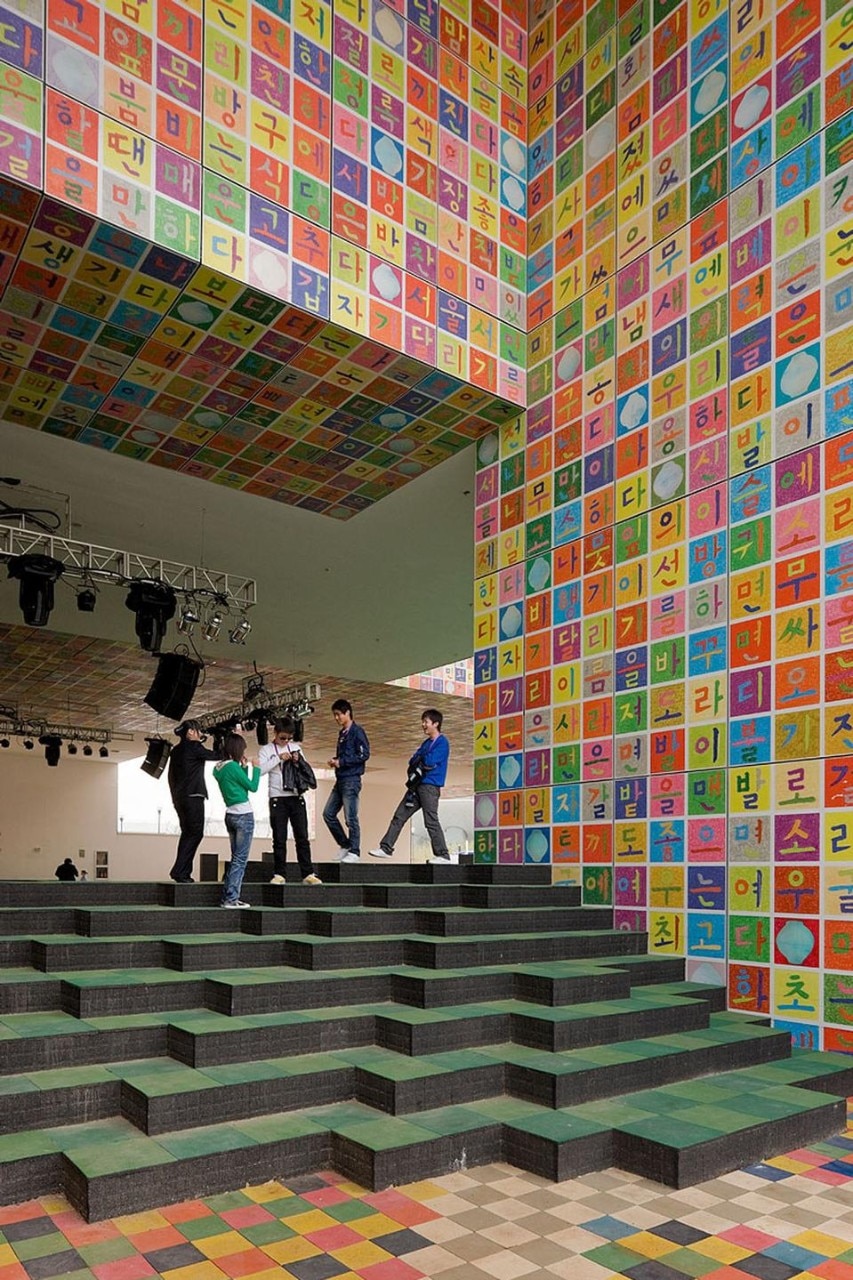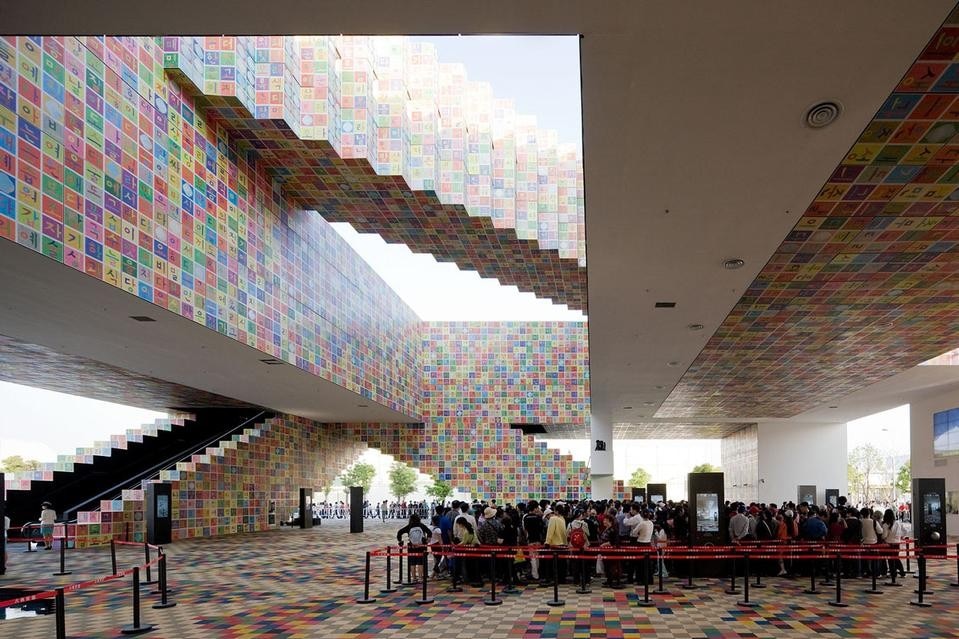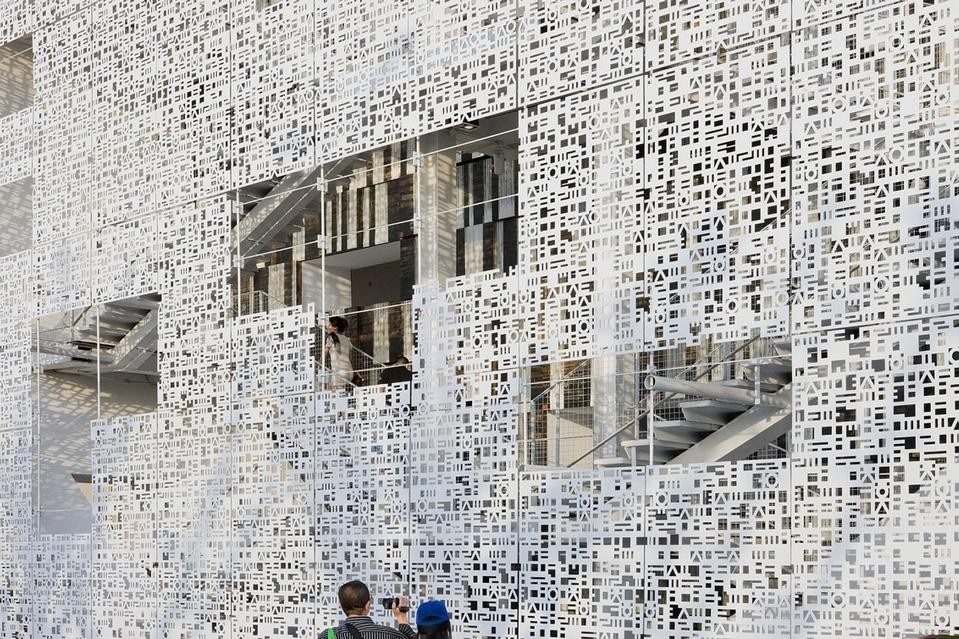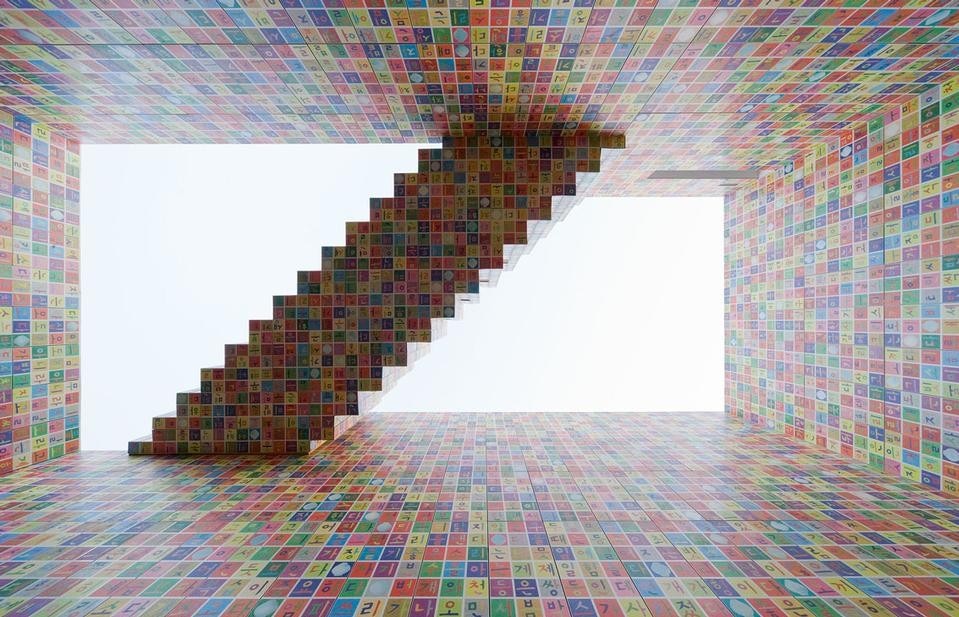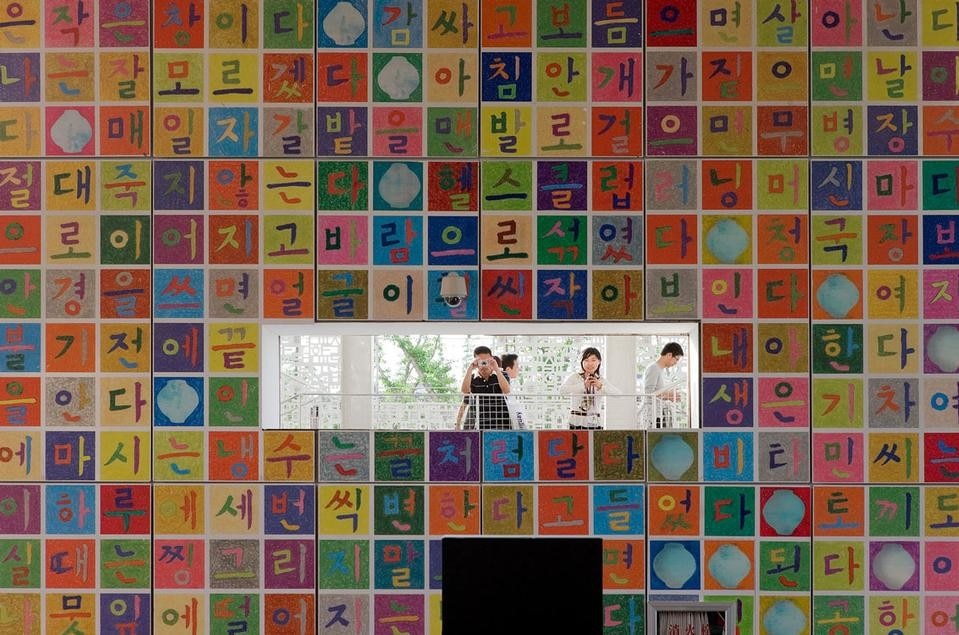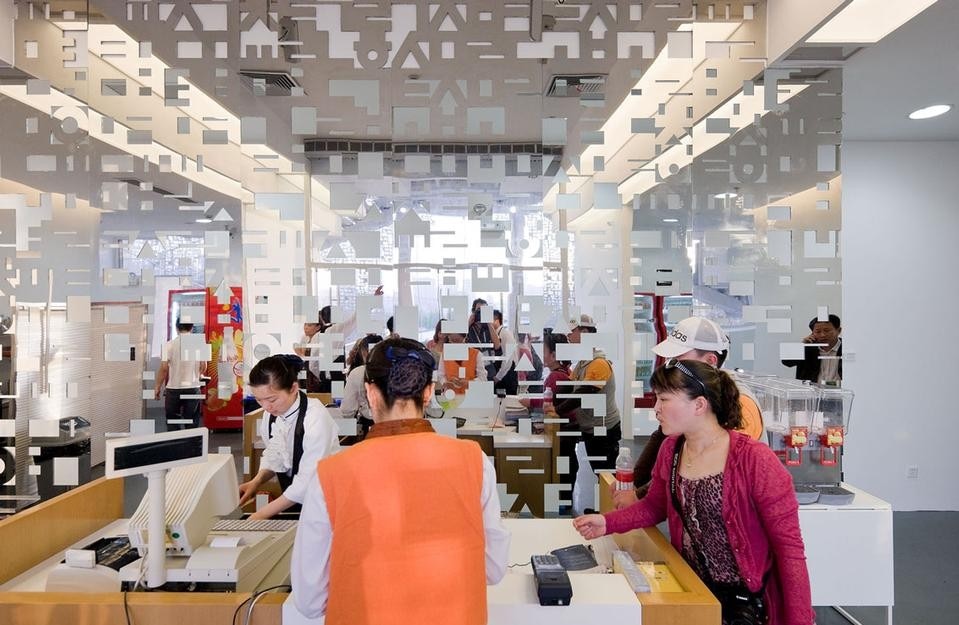Loaded with symbolism, the two storey, 6,000m2 pavilion – one of the largest at the Expo and the largest ever for South Korea – is covered by a layer of 40,000 pixel-panels. The colourful han-guel "art" pixels are designed by Korean artist Ik-Joong Kang. Like an 20m high SMS, individual pixels are highlighted to create letters.
For the ground floor the architects have transposed a map of Seoul, with a 5m wide, 79m river flanked by mountains running through the centre of the pavilion. Anticipating the queues to see the exhibitions – the South Korean pavilion has proved one of the Expo's favourites – large monitors and projections showing Korean culture from break-dancing to traditional music and dance promote some interaction and crowd entertainment even before the main exhibition begins upstairs.
Unlike previous Korean pavilions, the concept of this year's Expo was not about emphasising south Korea's technological accomplishments but more about its character, the urban life of the globalised city of Seoul. Beatrice Galilee
